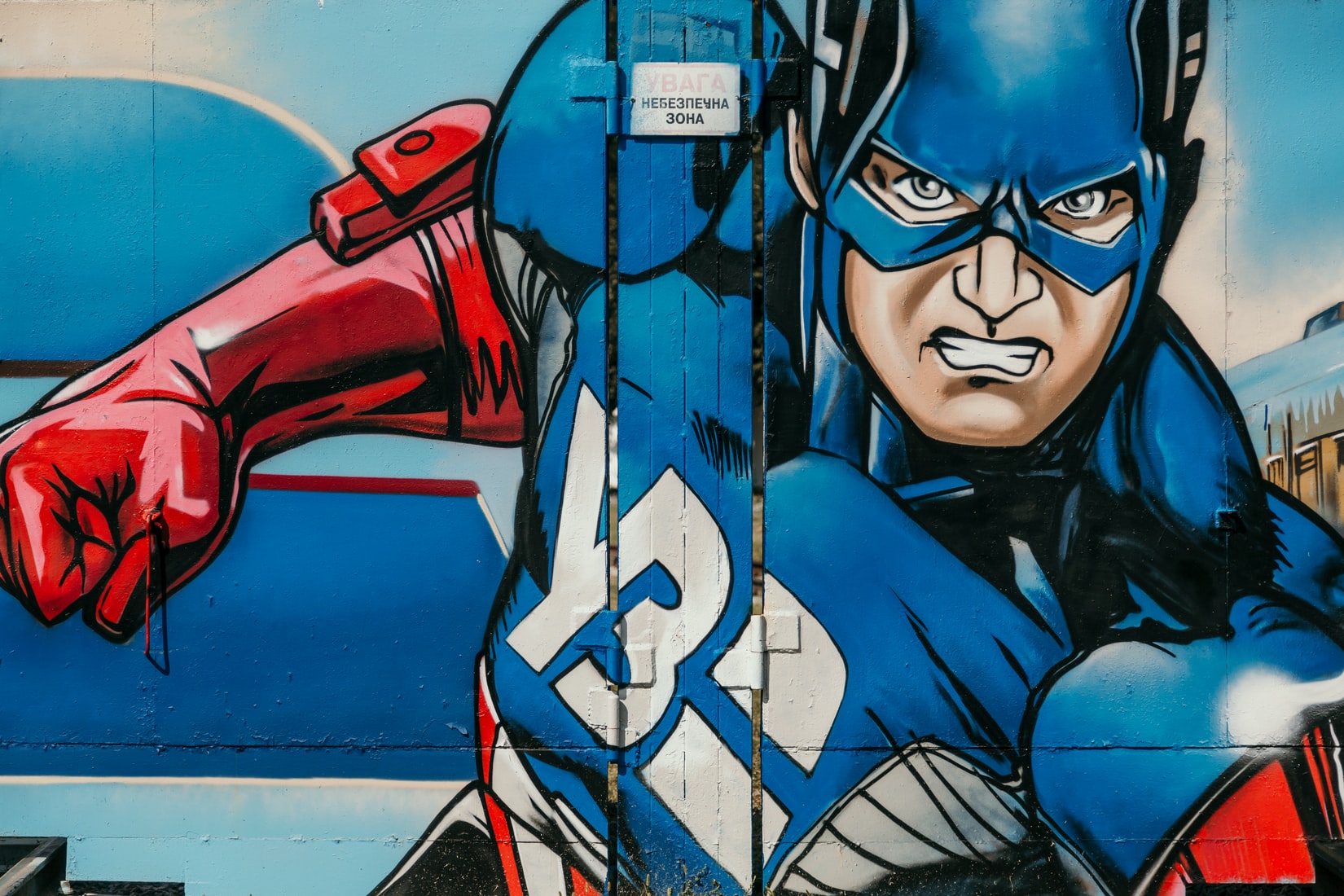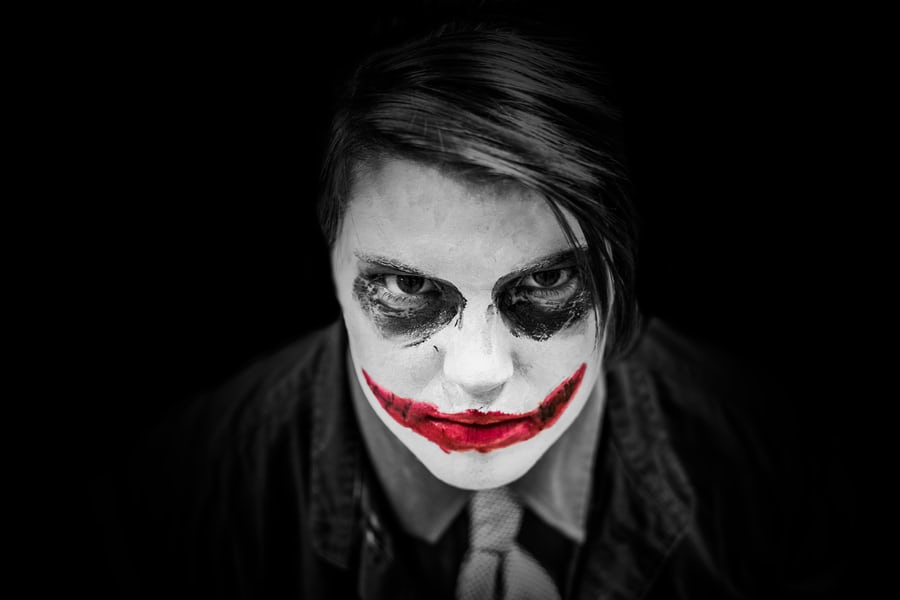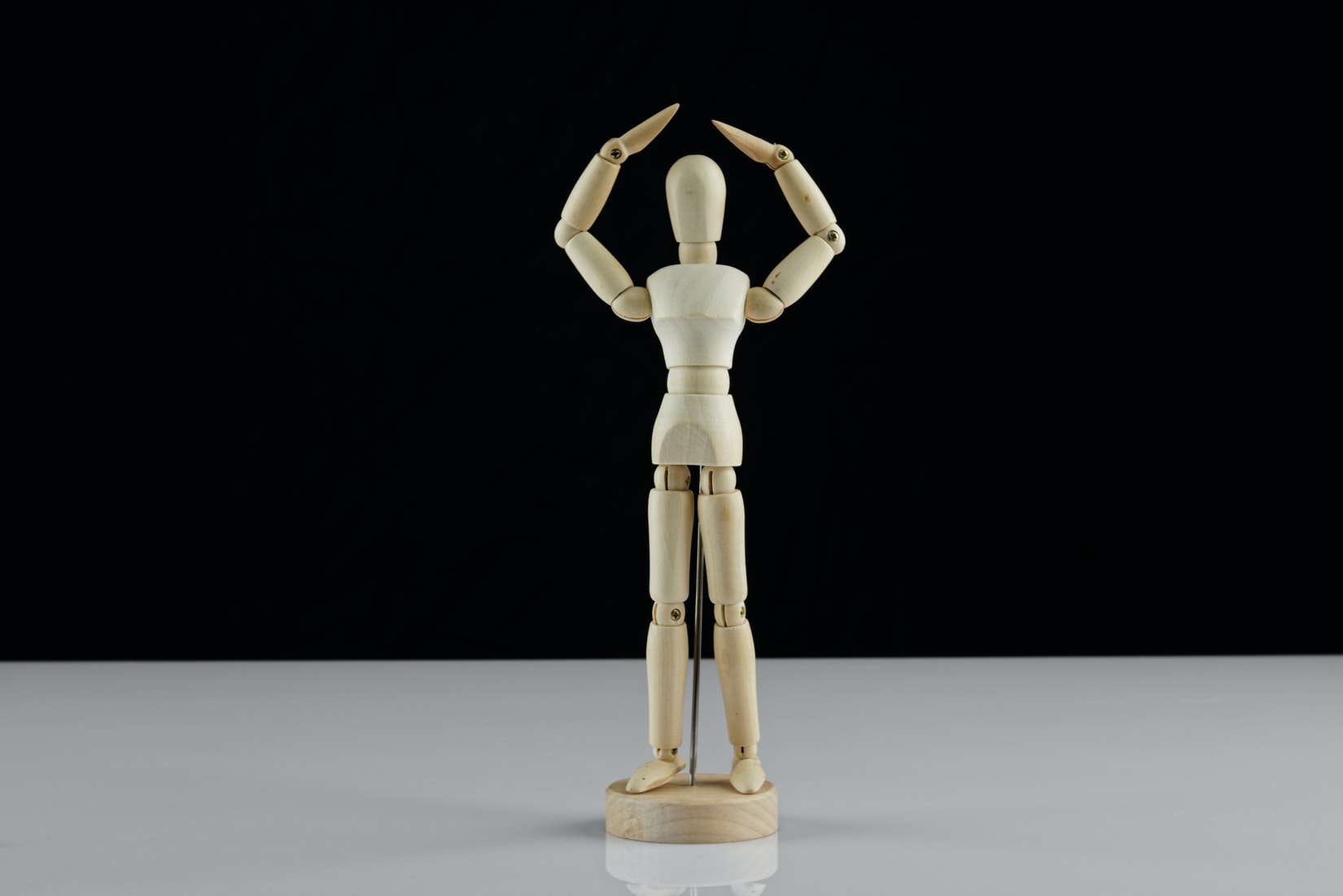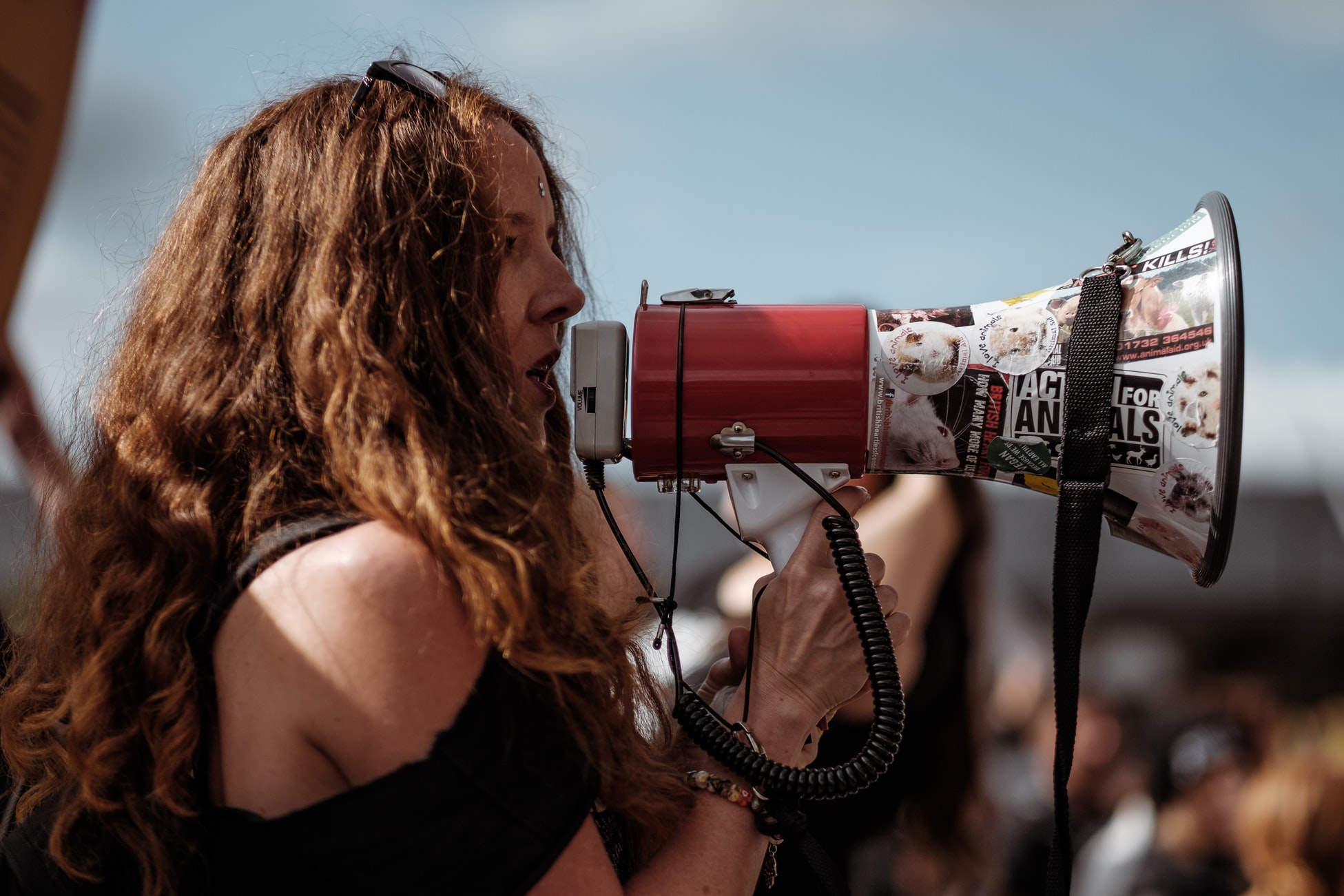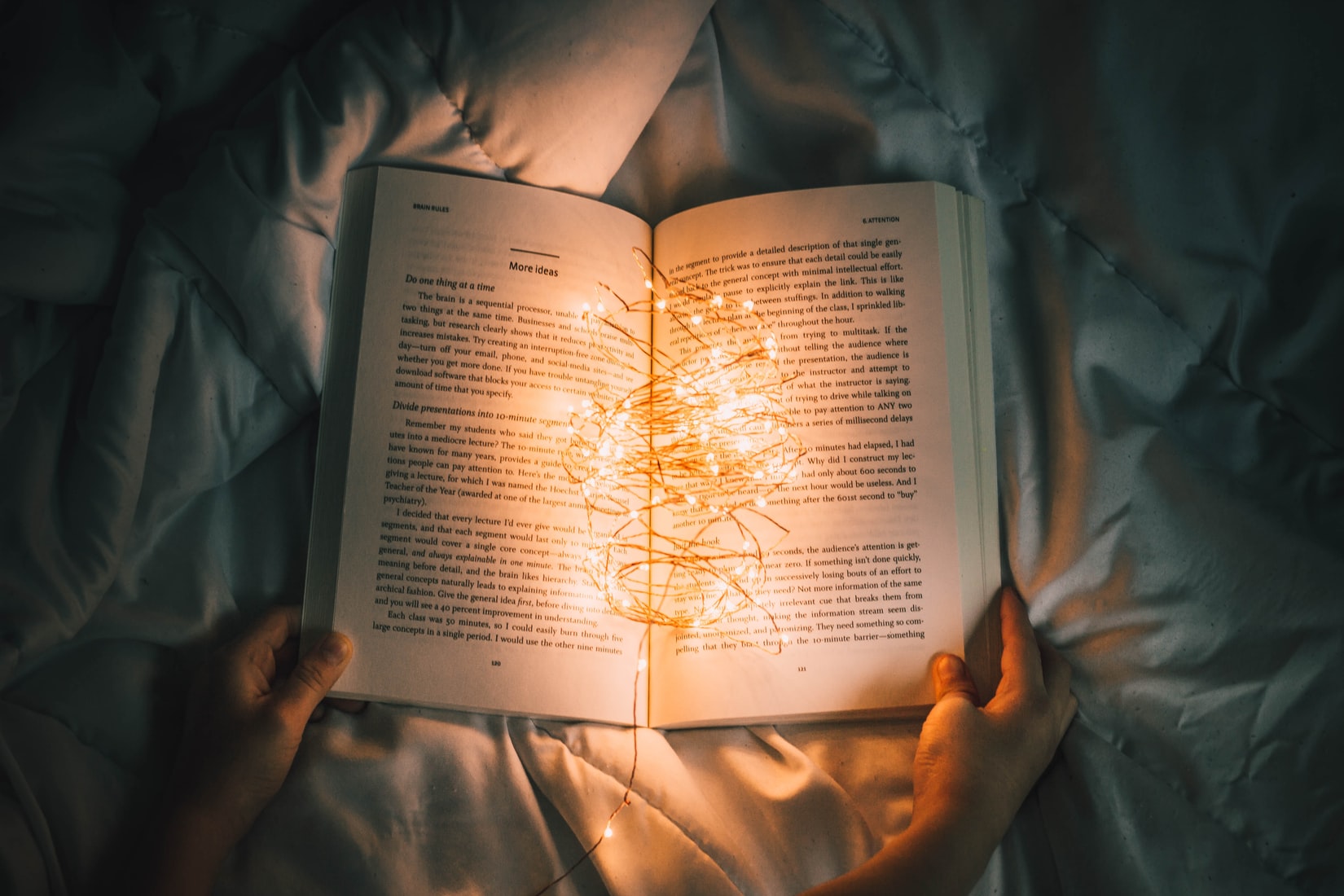-
#1
When you talk about the main character in a movie or book, what is the most popular word? For example,
The heroin( or the hero???) in the book is described differently from that in the movie.
-
#2
«Heroin» is the female version.
-
#3
A dangerous mistake here: heroine is the feminine form of hero, and heroin is a very illegal narcotic. Unfortunately, these days one reads more about heroin than one does about heroines!
-
#4
When you talk about the main character in a movie or book, what is the most popular word? For example,
The heroin( or the hero???) in the book is described differently from that in the movie.
The «main character» is the usual term used, I would say. Academics would use «protagonist» with the same meaning. «Hero» or «heroine» (note the spelling) would be used if the character does something heroic, but are usually used only when action is involved. Huckleberry Finn in The Adventures of Huckleberry Finn makes, at one point, what I would consider a heroic moral decision, but few people would think of him as a hero, whereas everybody thinks of the main character in an action film as the hero of the film.
-
#5
The female version of hero is heroine. Either word implies a good person, a champion.
A more literary word for main character of either gender, would be protagonist.
Heroin is an illegal highly addictive narcotic.
-
#6
Heroine is the traditional way to refer to a female hero.
But like «actor/actress» the distinction is growing vague. We often hear of female actors.
We often hear of female authors.
So you can still call them «heroines» but I doubt you would be called to task for using «hero» for both genders. At least I would not call you to task for that.
The other reason I prefer it is that there cannot be a heroin/heroine error when typing.
-
#7
Also (main) protagonist has the advantage that it may refer to an absolute villain who is often the main character in a film, play or book e.g. «The Day of the Jackal».
-
#8
so, when you mention the female main character in a book or in a movie, what is the most common way to refert it in written English?
-
#9
Most people I know actually say and write «main character»
unless it’s an english paper, and I’d use «Protagonist»
-
#10
Protagonist is a fairly useless word, I would say. It implies ONE main character, whichis not always the case. For instance…who is the main character in a love story? Or a triangle?
Heroine (if still politically permitted) is not technically what a lot of people think… the female lead. It’s a female hero. Scarlett O’Hara, Modesty Blaise, Moll Flanders, Barbarella.
The dramatic terms «lead» and «female lead» are often used. If you’ve got a single hero type thing you might refer to a «love interest».
Download Article
Download Article
Choosing a character name is often one of the most difficult steps in the writing process. The name needs to fit the character and be memorable for the reader. Thinking about the character’s age, location, and family, as well as the name meaning can help in the selection process. Picking a memorable name that will be easy for the reader to pronounce will help ensure you have characters that will suit your story and be relatable to your readers.
-
1
Choose time-period appropriate names. Think about what year the story is set in, and the age of your character. Pick a name that is suitable for the era of the story. Names that are currently popular may have been rare or not used at all in the past. [1]
- Yearbooks and old newspapers are a great place to find era-specific names. They are especially useful for finding names that were used in a certain era in a particular town, region, or country.
- The Social Security Administration website is a great resource for authors if your character is from the United States. It has a name popularity page that lists the 200 most popular names, for boys and girls, for each decade since 1880. You can also search by year or individual name. This is an easy way to determine what names were used in a particular time-frame in the United States.
- Many other countries have similar resources, such as Statistics Sweden[2]
or the Department of Internal Affairs in New Zealand.[3]
Check to see if the country of your character has a similar site.
-
2
Consider the character’s location and historical context. If your story is set in feudal Japan, a name like Andrew or Jennifer will probably not be appropriate. Likewise, a character from Spain is more likely to be named Isabella than Elizabeth.[4]
- Many names have different variations in different languages. A character from England named Mary, could be named Marie in France or Maria in Italy. Many different websites, such as behindthename.com, offer a name translator where you can enter a name and then see its form in many languages. Use these tools to find names that are appropriate for the geographic setting of your story.
- If you do choose an unusual name for your character’s place or time, explain it. Did they find it difficult growing up with a unique name? Where did they get their name? Incorporate the story of the name into the character’s backstory.
Advertisement
-
3
Think about the character’s parents. Usually people are named by their parents. What were your character’s parents like? Was the character named after a friend or hero of their parents? Or does their name express an aspect of their parent’s personality?[5]
- For instance, if the parents are traditional then perhaps the character is named after their mother or father. If the parents were environmentalists, perhaps they named their child Rainbow, Forest, or River. Thinking about the motivations and interests of the parents might lead you to the character’s name.
Advertisement
-
1
Use names that express the character’s personality. This doesn’t necessarily mean that the characters must be named “Courage” or “Honesty.” Look for names that have the meaning you want to express.[6]
- For instance, Caleb is derived from the Hebrew words meaning loyalty or devotion. Baby name books list the origin and meaning of names from many cultures.
- Baby name websites let you search either by name or by meaning. If you have a trait you want the name to express, you can enter that into the baby name website to get ideas. For instance, entering “kindness” returns results including Adelaide, Kevin, Rahim, and Shiva. This might lead you to names you would not have considered otherwise.[7]
-
2
Think about names that relate to the character’s occupation. If you are having trouble naming a character, think about their job or interests. Look up names that reflect these things; one of these names may fit your story.
- If you don’t want to be too literal, think about names that are related to their job or interest and hobbies. For example, if they are a florist, it may feel too obvious to name them after a flower like Hyacinth or Sage, but a common name like «Rose» won’t sound unusual and still refers to a flower.
-
3
Consider using nicknames. Think about your character’s personality. Are they formal or informal? Also reflect on who they will be interacting with in the story. Close friends and family are less likely to call the character by their full name.[8]
- Think about what names could easily have nicknames. Perhaps you like the name Alexander for your hero because it means “defender of men.” However, it may seem too formal if your character is a teenager or laid back. Consider using Alex, Al, or Alexei as nicknames.
Advertisement
-
1
Ensure the name is easy to pronounce. This is especially important if you are writing a science-fiction or fantasy story. It may be tempting to create an exotic name, but make sure it is easy for the reader. Try saying the name out loud to see how easy or difficult it is to pronounce.[9]
- Many people read aloud, say the characters names to themselves, or listen to audio versions of stories. If a name is hard to pronounce or overly complicated it will make it harder to focus on the story.
- Combining two common names is a great way to make a unique, but still pronounceable name. For example, you could mix Donna and Veronica and name your character Donica.
- Mythology is also a great source for unique names that are still pronounceable such as Ceres, Freya, or Castor.
-
2
Avoid using similar names for different characters. Using names that rhyme or sound similar will be confusing to your readers. Try using distinct names that start with different letters or sounds.[10]
- Using similar names like Tim and Tom, names that rhyme like Sherry or Carrie, or names that sound similar like Kelsey or Chelsea can be confusing for the reader.
- Say all the character names out loud to make sure they are not too alike.
-
3
Avoid names with famous associations. Characters with the same name as famous individuals will remind readers of these celebrities. This could detract from your story and make it harder for readers to understand the character.[11]
- Unusual names like Madonna, Elvis, Beyonce, or Adolph are associated with famous individuals and it may be hard to differentiate them from your character.
- If you do choose a famous name, make that a part of the story. Was your protagonist named Elvis because his father was a big fan of Elvis Presley? Is she named Maryam because her mother is a scientist? Make sure to explain the backstory to the name if the character is very obviously named after someone famous.
Advertisement
Add New Question
-
Question
What name is good for a Japanese woman?
Loves Earth: Midori, Loves Water: Una. Loves Fire: Akatsuki. Loves Animals: Tori.
-
Question
What will be a good name I should give to my antagonist who is a jealous and ruthless.
Choosing a name comes down to what you, as the author, feels fits your story and character. If you want to emphasize the antagonist’s jealousy and ruthlessness, look up names by meaning on a baby name website. For example, Nassir, Livius, and Zavis all mean envy. Look up different names by different meanings that relate to your character and see if any of the names work for your story.
-
Question
What is a good name for a robotic human?
Depending on your book, it could be any number of things. If the creator wants the robot to fit in, they might deliberately choose a fairly popular name like «Jane,» or «Sam.» They may also have a pseudonym such as X3-2006 used by scientists/researchers/whoever created him/her.
See more answers
Ask a Question
200 characters left
Include your email address to get a message when this question is answered.
Submit
Advertisement
-
Some websites will give you names with their origin and meanings. For example, «Kelly» means «warrior,» «Sonia» means «wisdom», and «Charles» means «free man.
Advertisement
About This Article
Thanks to all authors for creating a page that has been read 104,780 times.
Did this article help you?
What makes a protagonist or main character interesting and able to carry an entire novel or series? Explore protagonist examples from classic and contemporary fiction below, including tips to make your main character memorable:
First, a protagonist definition
The word ‘protagonist’ stems from studies of ancient Greek stage drama. The modern meaning is a ‘leading character or one of the major characters in a play, film, novel, etc.’ (OED).
A secondary meaning is ‘an advocate or champion of a particular cause or idea’ (OED). This comes from the prefix ‘pro-‘ meaning ‘for’ or ‘in support of’ (e.g. ‘pro-choice’). It’s a useful meaning because it contrasts with ‘antagonist’. This is the antonym (opposite word) we use to describe a character who opposes or ‘goes against’ main characters.
So a ‘protagonist’ is a main character who typically has a cause or purpose (for example, saving their world from a tyrant). Yet your protagonist’s ’cause’ might be simpler (or more self-focused). As simple as getting their dream job, finding love, or getting out of a dire situation.
So how do you write a memorable, intriguing protagonist?
1. Give your protagonist clear purpose or goals
If we look at protagonist examples, we can quickly see that every main character has something driving their choices and actions – a cause or goal.
For example, these protagonists (and their causes):
- Frodo Baggins (cause: Destroy One Ring and defeat the fascist Sauron) . From Tolkien’s The Lord of the Rings
- Amy Dunne (cause: Retain power in her relationship by any means). From Gillian Flynn’s Gone Girl
- Hazel Lancaster (find new connection despite terminal illness). From John Green’s The Fault in our Stars
In each of these protagonist examples, chosen at random, the character’s actions – committing to a dangerous quest, lying, joining a support group – demonstrates an underlying goal. Note, too, that your protagonist doesn’t necessarily have to be sympathetic or ‘good’. Gillian Flynn has said in the past that she wanted to write a woman who wasn’t pure fantasy fulfillment.
In each case, there are unknowns that make the main character’s goal more intriguing. How will an easygoing Hobbit confront terrifying malevolent forces? What will Amy do to maintain the upper hand over husband Nick and get her way? How will Hazel’s diagnosis and health affect her personal relationships?
In addition to a clear cause, ensure there are complications for main characters:
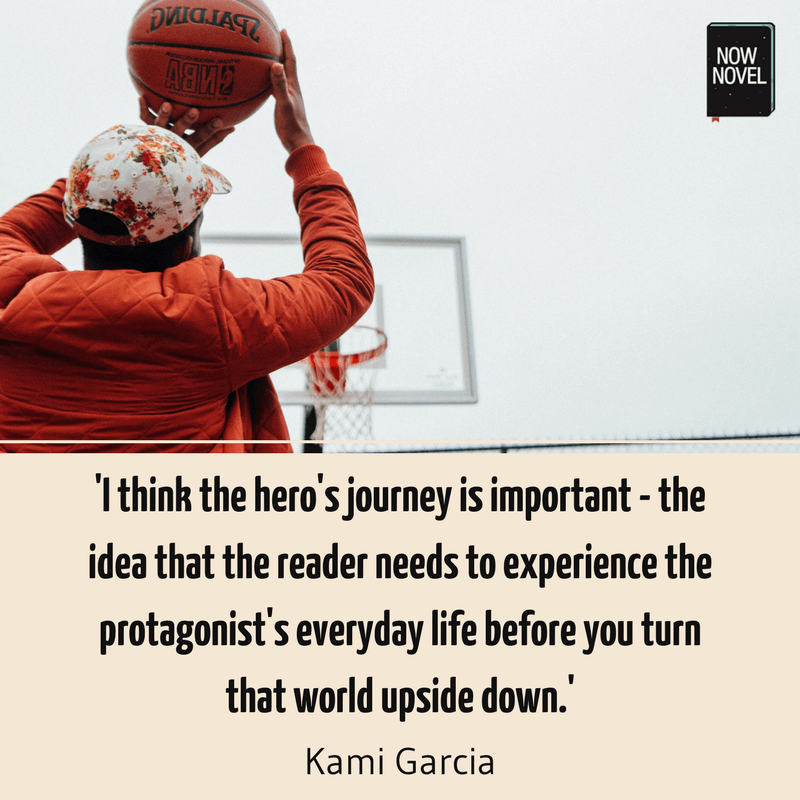
2. Complicate your protagonist’s progress from cause to goal
The cause – the commitment your main character has to an idea, belief or goal – is always ripe for complications.
For example, if a character is an activist – their cause is literally something they champion – what happens when another character accuses them of having ‘bad’ motives? For example, maybe the other feels they are doing it for attention, or out of personal guilt. What happens when characters question their commitments (or others do)?
Opposition and struggle (even if small) make characters’ paths to their goals more interesting. Harder-won success is usually more intriguing than easy wins.
Here are two protagonist examples and the complications that make their progress more suspenseful:
Protagonist: Noah Calhoun
Cause: Be with the woman he loves, Allie.
Complications: Differences in status and Allie’s mother’s interference because of this; separation due to World War II, Allie’s battle with a degenerative disease
From: The Notebook by Nicholas Sparks (1996)
Protagonist: Bill Hodges
Cause: Uncover the identity of psychopathic killer who drives a stolen car into pedestrians, killing eight.
Complications: Gets romantically involved with a blood relation of the car’s original owner, putting her in harm’s way and leading him to other difficult encounters
From: Mr Mercedes by Stephen King (2014)
In each case, the protagonist has a clear goal: Be with a love interest, unmask a killer. For both, their pursuit of this goal leads to suspenseful complications that delay resolution.
For both the above protagonists, some complications (interfering parents, secretive killers) are external. Others are self-made. The main characters’ own choices lead to complications (e.g. Enlisting in the army or getting romantically entangled).
3. Describe your main characters clearly
Well-described protagonists are a joy because we can picture them. Clear description brings their actions and aspirations to life.
Here are a few descriptive protagonist examples, from the first time we encounter the main character in a book:
Main Character: Quoyle
First description: ‘Hive-spangled, gut roaring with gas and cramp, he survived childhood; at the state university, hand clapped over his chin, he camouflaged torment with smiles and silence.’
From: E. Annie Proulx’s The Shipping News (1993).
Main Character: Violet
First description: She is awfully skinny, Violet; fifty, but still good looking when she broke up the funeral.’
From: Toni Morrison’s Jazz (1992).
In each instance, we get physical detail – tics or habits like Quoyle hiding his large chin, or Violet’s skinny frame. We also get a sense of personality – Quoyle’s timid nature is revealed by how he ‘camouglages’ himself with ‘smiles and silence’. Violet’s angry, impulsive nature is revealed in her attack on the body of her lover’s deceased mistress at her funeral.
When describing your protagonist, include temperament and personality. Use physical details (such as Violet’s thin frame) to underscore personality details (violet’s build suggests she expends more energy than she consumes, matching her frenzied antics at the funeral).
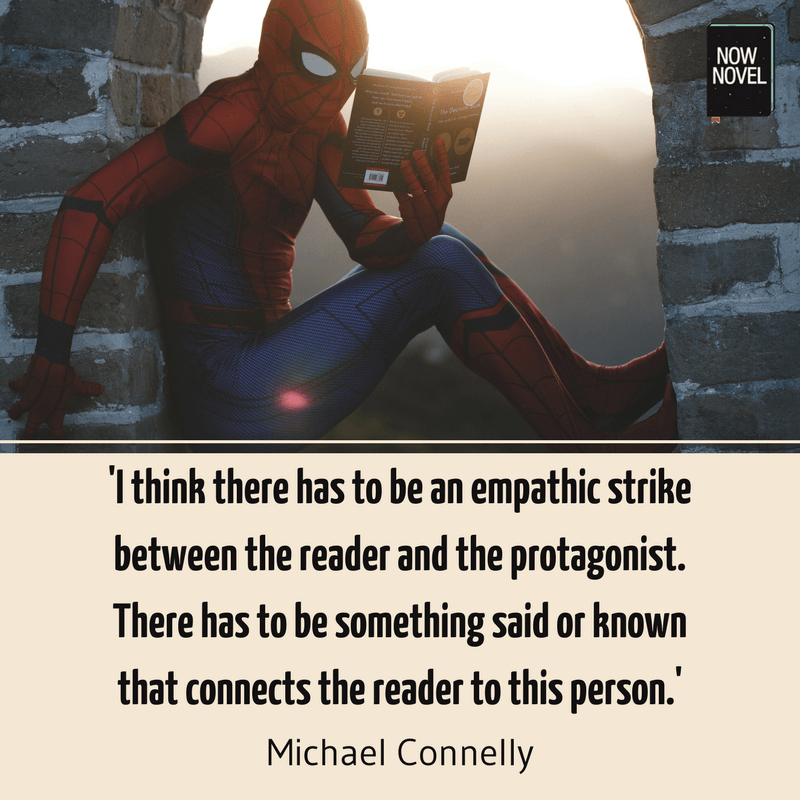
4. Give protagonists compelling flaws
Part of what makes a great protagonist memorable is their complexity. Characters may be boundlessly brave yet have a single, crippling fear. Or else they’re great lovers but poor anger management shows the dark flip-side of their passion.
Flaws don’t have to be traits we consider negative, either. Consider, for example, a protagonist who is endlessly forgiving. Even though the reader may well consider this a strength, it might play out as a flaw.
For example, a protagonist’s forgiving nature could embolden another character to walk all over them and continually cause pain. Part of their larger goal could thus be learning how to draw healthy boundaries and say ‘enough’. Or seek help if they can’t do this alone.
This sense of internal struggle adds an extra element of conflict that keeps character development interesting.
There are also many flaws to choose from. Your character may have imbalances in their personality such as:
- Trust: Being too trusting (or not enough)
- Empathy: Empathizing so much they endanger themselves (or attracting negativity because they lack empathy)
- Greed: Wanting more than is rational or fair (so that they push boundaries too far while they pursue ‘more’)
- Jealousy: Covetous behaviour. A protagonist wants something (or someone) all to themselves and creates conflict due to this imbalance
These are just some examples of protagonist flaws that build conflict and could hamper their pursuit of their goals, creating intriguing uncertainty.
5. Create interesting allies or opponents
Main characters are often only as interesting as the opponents authors pit them against. Opposition and challenge test a good main character, showing their inner strength (or lack thereof), their innovation or shortcomings.
For example, when two allied characters get in an argument how (or whether) they make up could reveal a lot about both. Maybe one holds a grudge longer than the other, while the other typically lives in the moment.
Treat interactions between protagonists and others as opportunities to develop both characters. For example, in J.K. Rowling’s Harry Potter series she uses fight scenes between her boy-hero and the series’ antagonist, Voldemort, to show Harry’s residual anger at past trauma inflicted by the antagonist.
How could an antagonist stoke and feed your main character’s negative traits? Through verbal attack, or by putting them in an impossible situation where they have to relive past experiences?
Use circumstances and other characters beyond a protagonist’s control this way (like the controlling mother in the example from The Notebook above). Make them force your protagonist to take a detour, overcome a key obstacle, know themselves better. Showing how main characters react to adversity, makes them more complex and human.
Need help creating a great protagonist? Join Now Novel for constructive feedback and brainstorming tools to develop detailed characters.
People may be drawn to your novel for the idea, or the plot, but the characters are what keeps them reading.
If the reader likes your main character, roots for them, rejoices in their successes and feels the pain of their defeats, they will be immersed in your story.
But if your main characters are flat or unlikeable, readers will struggle to push through hundreds of pages, no matter how exciting the ideas or plot.
In this article we’ll:
- Define what we mean by main character
- See what we can learn by contrasting this with protagonist or hero
- Look at the four main types of main character: Hero, Nemesis, Reflection and Romance
- Explore a technique for building a complex main charactersfrom the inside out
- And finally examine four ways to ensure readers love your main character
Let’s get started!
Who is the Main Character in a Story?
The ‘main character’ is the central character of the story.
The terms protagonist and hero are often used interchangeably with main characters, however, some people argue there are subtle but important distinctions.
Below we’ll explore what those differences might be, but first let’s consider some of the features that usually apply to a main character:
The story is told from their point of view.
If the story is told from the point of view of one character, then it is extremely likely that it will be of the main character.
They take the most action and face the biggest threats.
Main characters are usually the most active, pursuing goals and facing challenges.
They have the most ‘screen time.’
This goes hand in hand with taking the most action. The main character is featured most prominently on the pages. They probably have the most dialogue and the highest number of words written about what they’re up to.
They go through the biggest transformation.
Most stories are about change and growth, and the main character is most often the vessel of demonstrating this evolution. This change is more powerful if it is related to an internal conflict, rather than something external.
For example, going from poverty to riches is a change, but it’s external. The character could be just as selfish or humble in either case. But a character who goes from being selfish to being compassionate has undergone an emotional evolution.
You want to see them win.
Skilled authors know how to ensure readers empathise with the main character and are on the edge of our seat hoping they win.
Not all of these aspects will apply to every main character, but the more of them that apply, the more likely it is you’re looking at a main character.
So what are the exceptions?
Main Character vs Protagonist vs Hero: What’s the Difference?
The reason the terms main character, protagonist and hero are usually used interchangeably, is because it is extremely common for one character to fulfil all of these roles.
Harry Potter, Katniss, Bridget Jones, Winston Smith — all of these characters are the main character, the protagonist, and the hero. If you analyse your favourite books, you’ll probably find the same is true.
However, there are cases where making a distinction between these roles can help us understand and implement our stories with even more power.
There are various takes on what differentiates these three terms, but we believe the framework from John August provides the most consistency and clarity.
Using August’s analysis, we can differentiate the terms this way:
Hero
This is the person you hope to see win. You’re rooting for them to get what they want and need. They usually have a noble goal that we respect and admire.
Protagonist
The person who changes the most over the course of the story. At the beginning there is something important missing from their life — this could be compassion, courage, or a sense of belonging or authenticity. By the end of the story they become whole by having their needs fulfilled.
Note – The term protagonist comes from the ancient Greek ‘one who plays the first part, chief actor’, so actually applies better to what we would call the ‘main character’ today, just to confuse matters further…
Main Character
This is the most prominent character, with more words written about them and more dialogue than anyone else.
As mentioned above, in most cases we don’t have to separate these concepts, because the same character carries out all three roles. However, knowing the different nuances can lead to interesting variants.
Here are some examples:
*spoiler alert!*
The Shawshank Redemption
The Shawshank Redemption contains two main characters: Red and Andy Dufraine.
The hero in the traditional sense is Andy, as he is the one with a clear goal, and we are rooting for him to succeed. He’s the one who faces the most ‘baddies’ and comes out on top.
However, he’s not the protagonist, because he doesn’t evolve as an emotional being through the story — all of his conflicts are external. He knows from the beginning that he’s innocent and he doesn’t lack confidence, courage or compassion.
He knows who he is and he’s comfortable in his own skin.
The protagonist is Red. He’s the narrator, which gives us an insight into how he thinks and feels about the situation. In the beginning he tries to play the usual game with his parole hearings and say what he thinks they want to hear, even if it’s not genuine.
By the end he has come to terms with who he is and his situation and he is utterly authentic and genuine in his final hearing.
Coco
In Coco, Miguel is clearly the main character and the hero.
As the main character he is on screen the most, the story is told from his point of view (although there are flashbacks from Hector’s point of view, we only see them because Miguel sees them), and he is the only character present from beginning to end.
Miguel is also the hero, as he’s the one in the most peril, with a clear goal that we are rooting for him to achieve.
However, Miguel is already whole as a person. His problem is that his family won’t accept his love of music, but that’s an external conflict, because his passion for music is authentic and healthy.
The protagonist in Coco is Mama Imelda (and by extension Abuelita and the rest of the family).
Mama Imelda has never healed from the trauma of her husband abandoning her and has focussed her grief on hating music. But this misplaced hatred of music is actually harming the family, as it is driving Miguel away.
Once she learns the truth of what really happened to him, her evolution is to dissolve her hatred of music and forgive her husband.
Game of Thrones
And then there’s Game of Thrones. Even if we only take the first book, there are multiple heroes, main characters and protagonists. This is clear evidence that a story doesn’t have to have only one character fulfilling each of these leading roles.
Four Types of Main Characters
We’ve been talking about the primary main character so far, but generally there will be several major or main characters in a story.
Again, there are several ways to categorise main characters and their roles.
The Hero’s Journey identifies eight character archetypes, and the Jungian theory distills all characters (fictional and real!) down to twelve personality archetypes.
However, the one we’ve found most compelling and useful when it comes to crafting your main characters is Micheal Hauge’s four character types:
- Hero
- Nemesis
- Reflection
- Romance
Hero
(aka protagonist)
In the interests of moving forward, we will assume the hero and protagonist are the same character for now. This is the primary main character as well.
As we’ve explored above, this is the most prominent character, who faces challenges, takes action, has a goal, and who evolves as a person. We often see the story from their POV and we want them to succeed.
Nemesis
(aka antagonist, shadow)
This character is the one who most stands in the way of the hero achieving their goals. They are often actively working against the hero, but they don’t have to be evil. They may be a rival, or have understandable goals that just happen to conflict with what the hero wants.
Reflection
(aka ally, sidekick, foil)
This character is often an ally or sidekick, but Hauge’s choice to name this type of main character a Reflection, reflects (ahem) his belief that this character is also a foil.
In other words, in addition to being someone to help the hero on their way and someone for the hero to share their plans, thoughts and feelings with, the Reflection also emphasises what the hero is missing by demonstrating the opposite.
Romance
(aka idol, mentor)
Okay, by saying the Romance is also known as the idol or mentor we’re pushing the definition a bit, and to be clear, that is not what Hauge says.
Hauge’s definition is much simpler: The Romance is ‘the sexual or romantic object of at least part of the hero’s outer motivation.’ He further explains that a character doesn’t automatically fulfil the role of Romance just because there is romantic attraction.
For a main character to fulfil the role of Romance, part of the hero’s outer motivation must be to win that character’s love. This last part is what motivates our expansion of the definition to include idols and mentors.
For example, in Coco, Ernesto very neatly fulfils the role of ‘Romance,’ even though there is nothing romantic about the attraction. This is because Miguel idolises Ernesto and is desperate for his love.
By using this perspective, the role of Romance makes sense even in stories with no romance.
Try This:
It’s a good exercise to analyse your favourite stories and try to identify these four main character types. Do the characters fit neatly into them, or not? How does it affect how compelling and emotionally engaging the story is?
Now look at some stories you don’t find compelling – do they lack these roles? Or are the roles followed, but too slavishly?
Build a Main Character From the Inside Out
It’s possible for a character to come to you fully formed, with motivations, flaws and backstory. What’s more likely, however, is that you’ll start with a spark, and then add heart, memories, skin and clothes to the character, until you eventually have a living, breathing person.
Here we’ll explore some techniques for taking your character from concept to completion.
Note: This is just a brief overview of this method. You can read more about this method of character development in this article about character introductions, followed by this one about character development.
Also please note that our mantra is always tools not rules. So while we like to break everything down into practical, repeatable techniques as far as humanly possible, everything is intended to be flexible and optional.
Use whichever techniques work for you and feel free to disregard the rest. Do them in a different order, tweak them as much as you like.
Most important: do whatever brings you creative joy!
Start With a Spark
Some people base their characters on people they know, others take a stereotype and add a twist. Others are just struck with a character concept out of the blue.
However the inspiration comes, try to write down a single sentence or two that defines your character in a nutshell. This may include their socio-economic level, age, gender and career. It may also touch on their motivation, quirks, flaws or problems.
Here are some examples:
A self-sufficient girl in a poverty stricken district, who is fiercely protective of her little sister. (Katniss in the Hunger Games)
A young man in 1791 New Orleans, whose wife and child have just died. (Louis in Interview with a Vampire)
A single woman in 90s London obsessed with love, marriage and romance. (Bridget Jones in Bridget Jones’s Diary)
The Interview
Next take each aspect of that initial one liner, and ask questions about it to dig down into more detail.
Let’s take Louis from Interview with a Vampire as an example, and list some of the questions your might ask:
Young – Exactly what age? What would be expected of someone that age in that era? Does he feel comfortable with his age? Or does he feel out of place with people his age? Does he feel more or less mature than his peers?
Man – Does he feel comfortable in his role as a man and what that demands of him? Is he a very traditionally macho, masculine man, or is he more sensitive and progressive?
1791 – What is it like living in 1791? What is the political situation? The cultural situation? How does he feel about those things?
New Orleans – Has he always lived there? Does he like it there? What are the sounds, smells and sights that stand out to him?
Whose wife – What was his wife like? Were they in love or was it a marriage of convenience? Were they close? Did they respect each other? What did he find most attractive about her? Least attractive?
And child – How old was his child? What were they like? Was he close to this child? Did he always want children, or did he consider it a burden? Did he enjoy spending time with them? Was his love for them fierce or lukewarm?
Have just died – How long ago did they die, exactly? What happened? Could he have prevented it? Does he feel guilty? Has this affected how he sees the world in general? How is he processing his grief?
You can see that by exploring each of these aspects in a semi free-form way, you can learn a lot more about what makes a character tick and what makes them unique.
Characterisation
In addition to allowing your character to expand in layers from their core, it can be useful to look at certain specific questions that tend to pay dividends in dramatic works:
- Personality Type
- Flaw
- External Motivation (their want)
- Internal Motivation (their need)
- Positive Traits
- Negative Traits
- Quirks and Mannerisms
- Fears and Phobias
- Life Philosophy or Motto
- Most treasured possession
You can read about each of these aspects of characterisation in detail here.
Voice
One of the trickiest aspects of writing characters is eliminating the author’s mannerisms from each character’s voice.
Hand in hand with that is ensuring each character has a style of speaking and acting which is distinct from all the other characters.
To help develop each main character’s distinctive voice, it can be useful to consider different aspects of their influences and habits:
- What is their vocabulary like?
- Do they have any distinctive speech patterns / habits / quirks?
- What is their educational level?
- What are their racial, cultural and regional influences?
- What slang do they use?
- Are they direct or rambling?
- Are they assertive or passive?
- Are they proactive or reactive?
- What is their sense of humour like?
- What sort of metaphors do they use?
Each of these aspects of main character voice is explored in more detail here.
Backstory
None of us appear out of nowhere as people — we are formed by all our experiences up to that point. So exploring your character’s childhood, adolescence and subsequent years up to where they are today, can help you create a character who feels more three dimensional.
There are many different ways to approach this.
Some authors like to write pages and pages of backstory, detailing every aspect of the character’s life up to that point, from how their parents met to how their birth went to their favourite childhood toy to their first crush, and so on.
If you find that process enjoyable, great! If that feels like overkill, you could simply focus on a few key formative experiences the character had, which may relate to important aspects of the story they are taking part in.
Questionnaire
Many writers find it useful to complete a series of questions, to get them thinking about details of the main character they might not have considered.
Check out our Ultimate Character Questionnaire here for over 150 questions, and advice on how to use them.
4 tips for Writing Main Characters Readers Will Love
It’s all very well having a fully rounded main character with a distinct voice and backstory, but it’s still possible to do all that and have a character readers don’t warm to.
When the main character is someone they don’t empathise with or respect, it’s difficult for a reader to stick with a whole story. Here are a few quickfire tips to ensure your main character is someone your readers will love.
Again, these are based on Michael Hauge’s theory from his book Writing Screenplays that Sell.
1. Create empathy by showing the character suffering undeserved misfortune or in jeopardy.
If we see someone trying their best but everything seems to be against them, our heart naturally goes out to them — because we’ve all been there.
Similarly, if someone is in physical danger or in danger of losing something important, we worry on their behalf.
2. Make a character likeable by showing them as kind, liked by others or funny.
And humour is one of the most effective ways to get readers on board with a character. It’s possible to get away with a character who is rude, mean and selfish if they’re genuinely funny while they go about it.
3. Show the main character to be highly skilled or in touch with their own power.
We are drawn to confident and skilled people. We may be envious or wish to vicariously experience their glory and we may feel that by being close to them, some of that star value will rub off.
Obviously if you take this too far and come up with someone implausibly perfect, we change our minds and go right off them, which brings us to our next point…
4. Make characters relatable by giving them flaws.
Many of us feel like a walking Curb Your Enthusiasm episode, blundering from one foot in mouth to the other, spicing things up with the occasional toe stubbing.
A skilled, powerful person with unexpected weaknesses makes for a compelling main character.
Use Character Roles to Tell a Powerful Stories
It’s important to remember that while understanding how having a protagonist or hero affects your readers can make you a more powerful story teller, novel writing is an art, not an exact science.
If identifying who’s playing the role of protagonist, hero or main character in your novel helps you understand why something’s not working and fix it, that’s great.
But if the novel works, and entertains, engages and breaks hearts, it doesn’t matter if your main character doesn’t neatly fit into the right boxes, or the same boxes as everyone else.
If you found this account of main characters useful, please put a comment below. We’d also love to hear about your main characters or the techniques you use to create them!
In English, we have words for the characters in something/the people acting something. An example would be «The cast of the film was very talented.»
Would it be right to say «The cast of the book was…», or would this be incorrect as the characters in a novel are fictional?
asked May 1, 2016 at 9:01
2
The term «cast», meaning actors, is reserved for the theatre and is not used for characters in a book. In a quick search I was unable to find a collective noun for book characters, so the best option is probably to say «The characters in the book were … (richly drawn / absurd / poorly developed / etc)».
answered May 1, 2016 at 9:22









